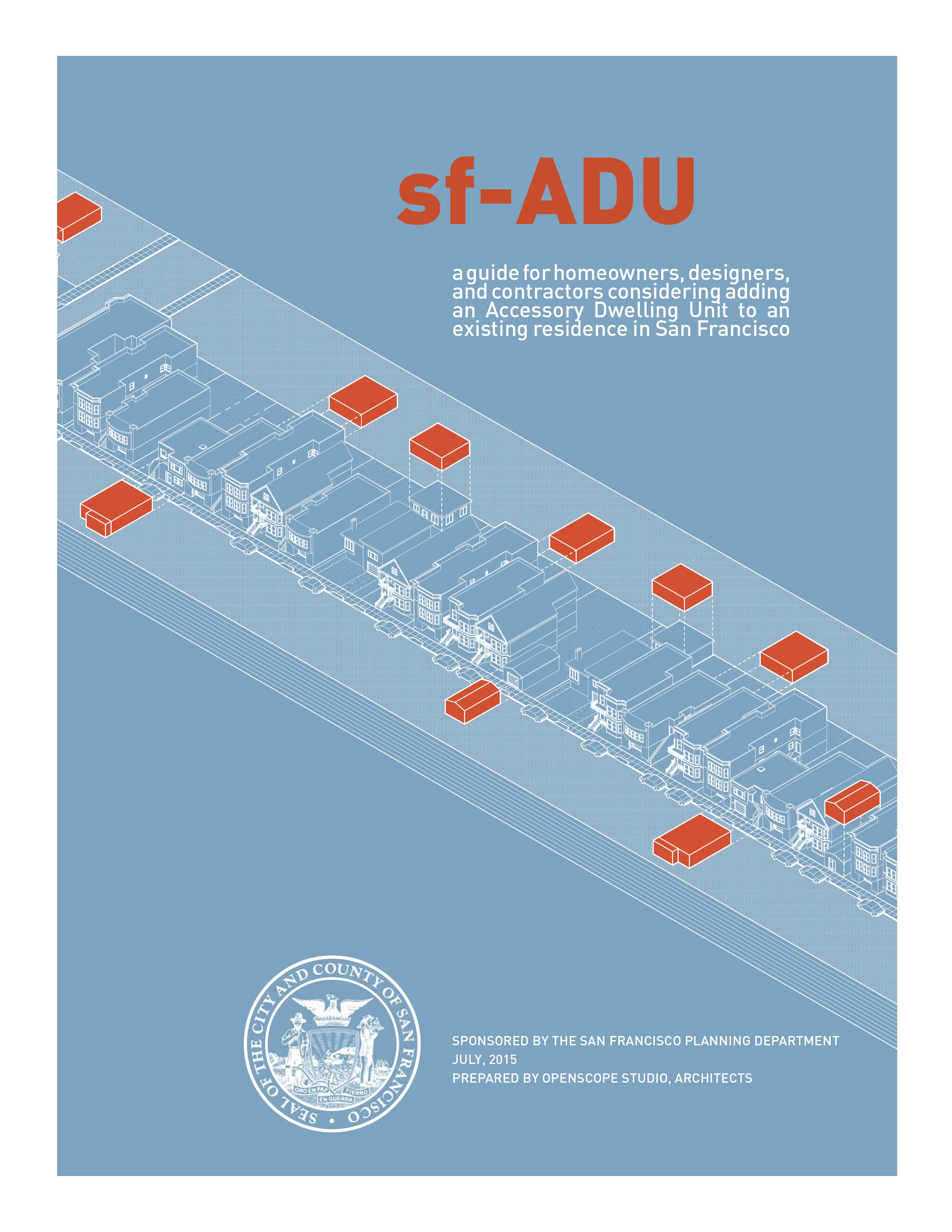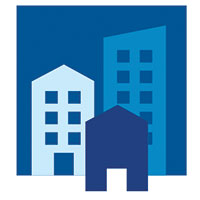Planning Home Case Study: San Francisco, California
Accessory Dwelling Unit (ADU) and Unit Legalization Program
Community Challenge

San Francisco, California
The City of San Francisco has an affordable housing crisis. Median rent for a two-bedroom apartment is $4,680 per month. Median single-family and condo home prices are $1.7 million and $1.2 million, respectively, according to Business Insider.
The housing cost burden has worsened in the last decade for all but the highest income households, according to a Housing Needs and Trends Report prepared by the San Francisco Department of Planning in July 2018. Further, the number of higher-wage workers living in the city has skyrocketed in recent years along with the number of higher-income households. At the same time the number of low- and moderate-income households has declined either because they have been displaced, chose to move out of the city, or may have increased their income.
The crisis compelled San Francisco planners and elected officials to look for new housing opportunities for low- and middle-income residents.
Planning Solution
Late Mayor Ed Lee issued an executive directive in 2013 directing the city to retain and accelerate housing production. In 2014, with support from both democratic factions in the city, the Board of Supervisors passed legislation ending a decades-long ban on new accessory dwelling units (ADUs) and established a process to legalize unwarranted dwelling units (UDUs) (i.e., units that were constructed without permits).
"In 2014 the city began a pilot program in one neighborhood allowing new units to be built beyond the existing zoning density limits," said Marcelle Boudreaux, principal planner and ADU implementation manager at SF Planning. "Seeing even broader opportunities, our lawmakers amended legislation over the next several years to expand the scope citywide and increase flexibility for adding units for property owners."
To ensure as many ADUs as possible stay affordable over time, the city requires all units receiving zoning waivers to be subject to rent control. Owners are required to sign a Regulatory Agreement that states the rental terms. In addition, formerly illegal units remain subject to rent control if they met the requirements.
The city has tweaked the ADU legislation several times since its adoption. As of July 2018 there is one process for projects that involve adding a new ADU unit to a single-family home where the ADU meets certain ministerial requirements.
A second process is available for building an ADU in a single-family home where the owner is seeking discretionary waivers to the city's zoning requirements, or for any ADUs proposed in multifamily buildings. Applicants may seek zoning waivers to density standards, open space, rear yard, parking, bicycle parking, and exposure requirements.
The San Francisco Planning Department website has fact sheets (updated in September 2018) on both programs.
Owners with Unwarranted Dwelling Units have additional administrative requirements to fulfill along with the ADU permit application to participate in this voluntary program. Such owners must prove the unit existed before 2013. In order to assist owners with the scope and cost of what legalization may entail, the city developed a screening checklist outlining all code requirements. Owners must hire an engineer, architect, or contractor who will be responsible for providing them with a professional assessment prior to filing an application.
The city worked with an architecture firm to develop a guidebook for homeowners and contractors when adding a unit to an existing residential building. An updated version of that guidebook will be available in fall 2018.
"The Handbook has been a key tool for homeowners to really breakdown planning jargon and review the prototypes for visualizing how an ADU can be added to THEIR home," said Boudreaux. "For those not in our field, having these resources help communicate much more effectively."
sf-ADU

A Guide for Homeowners, Designer, and Contractors Considering Adding an Accessory Dwelling Unit to an Existing Residence in San Francisco
An Accessory Dwelling Unit (ADU) is a residential unit added to an existing building. ADUs are subordinate to the primary residential unit(s), generally due to their location on the lot and/ or the size of the unit. Also known as Secondary Units, In-Law Units, or Granny Flats, ADUs are generally developed using underutilized spaces within a lot, whether a garage, storage, rear yard, or an attic. ADUs are independent units that have their own kitchens, bathrooms and living areas. These units can be developed either within the existing building, with an extension to the existing building, or as a separate structure. ADUs are more likely to utilize side entrances, exhibit lower ceiling heights, experience lower light exposure, and so forth.
This handbook serves as a guide for homeowners or contractors when adding a unit to an existing residential building. It helps define the various physical forms for ADUs; multiple City Codes which regulate adding ADUs; and when such investment is financially feasible or beneficial to small property owners. Created by the San Francisco Planning Department and OpenScope Studio.
Current Results
Since the process started in 2013, San Francisco has made an ongoing effort to promote the benefits of ADU legalization and broaden residents' support for the units. Most important, these units offer housing opportunities for lower-income and displaced residents — including restaurant workers, security guards, childcare providers, teachers, and delivery truck drivers — without whom the city could not function.
For the owner, an ADU can subsidize the mortgage by creating a rental apartment or can enable a multi-generational household. A property owner can recoup construction costs in a few years. Building an ADU in San Francisco costs less than $150,000; the average cost per unit in a new development is $500,000.
Many U.S. cities are where San Francisco was in 2013: A substantial number of illegal dwelling units are in existing homes; there is unrealized potential in new residential construction to accommodate a little more density; and there is a shortage of affordable housing. San Francisco's deliberate, inclusive, and successful process — which involved neighborhood groups, state and local elected officials, planners, homeowners, and renters — should encourage other cities to get started on their own ADU legalization program.

